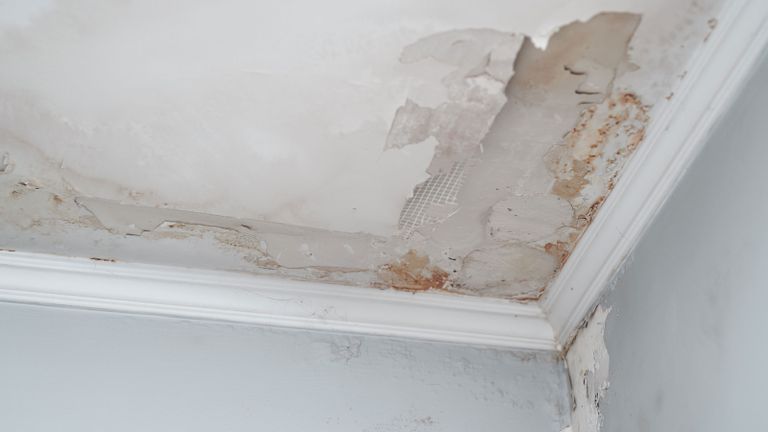What're your concepts about Ways to Reduce The Risk Of Fire And Water Damage?

Water gives life, water invasion on parts where it's not expected to be can result in damages. Residences with water damage smell old and stuffy.
Water can originate from many sources such as tropical cyclones, floodings, ruptured pipes, leakages, and sewer concerns. In case you experience water damages, it would be good to know some security precautions. Below are a couple of standards on exactly how to manage water damages.
Do Prioritize Residence Insurance Policy Protection
Water damage from flooding because of hefty winds is seasonal. You can additionally experience a sudden flooding when a faulty pipe suddenly breaks into your house. It would be best to have home insurance that covers both disasters such as all-natural catastrophes, and emergencies like damaged plumbing.
Don't Fail To Remember to Switch Off Energies
In case of a disaster, specifically if you live in a flood-prone location, it would certainly be advisable to turn off the main electric circuit. This cuts off power to your entire residence, protecting against electrical shocks when water is available in as it is a conductor. Moreover, don't neglect to turn off the main water line shutoff. When floodwaters are high, furnishings will certainly walk around and also trigger damage. Having the major valve turned off protects against additional damage.
Do Remain Proactive as well as Heed Climate Signals
Storm floods can be very unpredictable. If there is a history of flooding in your community, stay prepared as well as aggressive. If you live near a lake, river, or creek , listen to evacuation warnings. Obtain belongings from the first stage and also cellar, after that placed them on the highest possible degree. Doing so lowers potential residential or commercial property damage.
Do Not Disregard the Roof
You can prevent rain damages if there are no openings and also leakages in your roof covering. This will avoid water from flowing down your walls and soaking your ceiling.
Do Pay Attention to Small Leaks
A ruptured pipeline does not happen over night. Usually, there are warnings that indicate you have weakened pipelines in your home. You might see bubbling paint, peeling off wallpaper, water streaks, water stains, or trickling audios behind the wall surfaces. Ultimately, this pipeline will certainly burst. Preferably, you should not wait on points to rise. Have your plumbing fixed before it leads to large damage.
Don't Panic in Case of a Ruptured Pipe
Maintaining your clearheadedness is essential in a time of dilemma. Because it will stifle you from acting fast, panicking will only intensify the trouble. When it pertains to water damage, timing is key. The longer you wait, the more damage you can expect. Thus, if a pipeline bursts in your house, quickly shut down your primary water valve to remove the resource. Then disconnect all electric outlets in the location or switch off the breaker for that part of the house. Lastly, call a trusted water damage restoration expert for assistance.
Water provides life, water intrusion on components where it's not supposed to be can result in damage. Houses with water damage smell musty and also old.
Water damages from flood fees to heavy winds is seasonal. You may notice gurgling paint, peeling wallpaper, water streaks, water stains, or leaking audios behind the wall surfaces. When it comes to water damages, timing is essential.
Water Damage Do's and Don'ts
Do's
Always use rubber gloves to protect your hands & rubber boots to protect your feet and legs. Damage from water and bacteria growth can begin within hours. Call for professional help. Remove as much water as possible by mopping and blotting with sponges. Pull up wet rugs and carpets if hardwood floors are below. Lift draperies off the floor, loop through a coat hanger and place the hanger on the drapery rod. Wipe furniture, prop up wet furniture cushions for even drying and place aluminum foil under furniture legs. Move photos, paintings, art objects, computers, other electronics and valuables to a safe, dry location. Do not remove books from shelves. Pack them tightly to prevent page warping until a restoration professional can begin this specialized drying. Ventilate wet areas. Turn on air conditioning for faster drying in summer (only if there is no visible mold) and winter, alternate cycles of opened windows and heating. Also, open drawers, closets and cabinet doors to enhance drying. Don'ts
Do not enter rooms where there is wet and sagging ceiling! Do not enter a room with standing water until electricity has been turned off. Do not use a regular household vacuum to remove water. Use heat to dry closed building interiors. Mildew and more moisture damage can occur. Do not use electrical appliances while on wet carpet or flooring. Do not disturb visible mold. https://www.myknowledgebroker.com/blog/personal-insurance/water-damage-dos-and-donts/

I stumbled upon that blog post about Ways to Reduce The Risk Of Fire And Water Damage when doing a lookup on the search engines. In case you liked our blog posting if you please make sure you remember to share it. Thanks for your time. Please come visit our blog back soon.